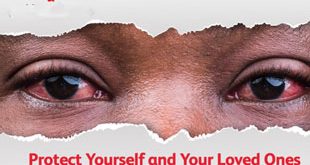
Nearly half of all countries in Africa have stopped tracing the contacts of cases
| TH INDEPENDENT | With new COVID-19 cases significantly dropping, many countries are increasingly curtailing COVID-19 surveillance and quarantine measures. While the need to reopen economies and resume social life is important, the World Health Organization (WHO) is calling for caution and consideration of the risks involved.
WHO says contact tracing is still a key strategy for curbing the spread of the virus and reducing mortality. In August 2020, 23 out of 54 countries on the continent were conducting comprehensive contact tracing, which entails listing and following all the contacts of a confirmed case. With the evolution of the pandemic, countries have moved towards prioritized contact tracing, where only contacts at high risk of infection or falling severely ill are followed.
But based on analysis of open-source data, WHO finds that by March 15, 2022, 13 countries were conducting comprehensive surveillance, while 19 countries were carrying out prioritized contact tracing. Twenty-two African countries were no longer carrying out any kind of contact tracing.
Countries stopped contract tracing
“It is a matter of concern that nearly half of all countries in Africa have stopped tracing the contacts of cases,” said Dr Matshidiso Moeti, WHO Regional Director for Africa in a virtual media briefing on March.24.
“This, along with robust testing, is the backbone of any pandemic response. Without this critical information, it is difficult to track the spread of the virus and identify new COVID-19 hotspots that may be caused by known or emerging variants.”
Aside from contact tracing, testing is a critical surveillance strategy, she said. The WHO benchmark for countries with a good testing rate is 10 tests per 10 000 population per week.
In the first quarter of 2022, only 27% of countries were said to be achieving this weekly target, indicating a concerning decrease in testing rates compared with 2021, when 40% of countries reached the benchmark.
Besides polymerase chain reaction (PCR) testing and antigen rapid diagnostic tests, WHO is also recommending self-testing using antigen-detection rapid tests to expand access to diagnostics and has published guidelines.
While COVID-19 cases have declined across the continent since the peak of the Omicron-driven fourth wave in early January 2022, vaccination coverage remains far behind the rest of the world. About 201 million people or 15.6% of the population are fully vaccinated compared with the global average of 57%.
However, with cases low and pressure mounting to open up the economy, countries are not only cutting back on surveillance but a raft of other measures. A WHO survey conducted in March 2022 found that seven out of 21 countries reporting no longer required quarantine for people exposed to the virus. One country did not require isolation of confirmed cases, while four required isolation for only symptomatic cases.
Twenty-two countries ban mass gatherings down from 41 a year ago, according to data received on the WHO portal tracking COVID-19 health measures implemented by countries.
However, in most countries, the requirement to wear a mask remains in place. Forty-three countries maintain mask-wearing, although four have eased the measure, with masks mandatory only on public transport or in closed spaces.
“For more than two years, the pandemic has maintained a painful stranglehold on our lives, and the imperative for countries to revive economies and livelihoods is understandable. However, the pandemic isn’t over yet and the preventive measures should be eased cautiously with health authorities weighing the risks against the anticipated benefits. Lifting the public health measures does not mean lifting the foot off the pedal of pandemic vigilance,” said Dr Moeti,
WHO has provided clear guidance to countries on how to implement and adjust public health and social measures in different situations and contexts as the COVID-19 pandemic evolves. These guidelines recommend that countries take a comprehensive approach which weigh the risks and anticipated benefits when determining whether to relax measures.
WHO says countries should take into consideration the capacity of health systems, the immunity of the population to COVID-19, and the countries’ socio-economic priorities. If measures are relaxed, there should be a system in place for them to be quickly reinstated in the event of a deterioration of the situation.
Additionally, as countries lift or adjust the public health measures, it is critical to ensure that systems are in place to closely monitor the infection trends, allow timely detection and treatment as well as swiftly respond to the emergence of new variants of concern. Countries should also scale up vaccinations to increase the number of people protected from the adverse effects of the virus.
****
 The Independent Uganda: You get the Truth we Pay the Price
The Independent Uganda: You get the Truth we Pay the Price


